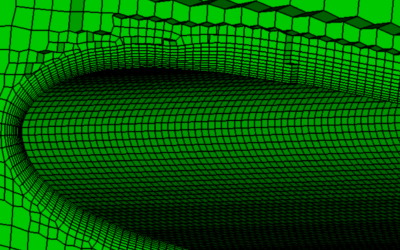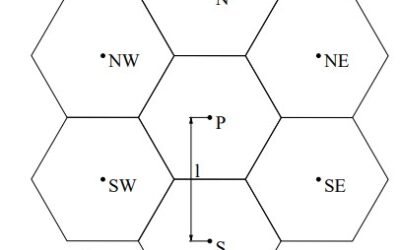CFD meshing terminology can be quite daunting, especially for beginners. This article will give you an overview of the most common CFD meshing terms and expressions we use daily, in alphabetical order. If you are struggling with some of the expressions we are using in...
Low-RE turbulence modelling of boundary layers with CF-MESH+
The goal of this post is to discuss the best practices of boundary layer generation in CF-MESH+ needed to perform low-Re turbulence modelling of boundary layers, on Ahmed body example. In order to show the importance of accurate boundary layer modelling, the post...
Is it always the mesh? Part 6: Feature edges and corners
Quite often I hear complaints about non-orthogonality, the required number of non-orthogonality correctors to achieve convergence, and how it is worthless even trying to run a solver on a mesh, etc. The point of this series of posts is to give you an overview on the...
Optimized CAD-to-Mesh: A Comprehensive Guide to Enhanced Workflow
Introduction The process of importing CAD files has become simpler, more efficient, and packed with enhanced functionalities in the latest update to CF-MESH+. Users can now seamlessly import .step, .iges, and .brep files via the command line using the new CADToFMS...
Is it Always the Mesh? Part 5: Boundary Layer Meshing
The point of this series of posts is to give you an overview of the popular myths and to help you understand what is going on in your Finite-Volume CFD code and how to interpret mesh quality checks for your problem. The goal of this post is to de-mistify the impact of...
5 Most Important Steps in CF-MESH+
For the mesher to do its work the best it can and create high-quality meshes, it is necessary to follow some CFD meshing guidelines. Our experience taught us about the 5 most important steps and features in CF-MESH+ you should consider, depending on your meshing case:...
Introducing Enhanced Anisotropic Meshing in CF-MESH+ 5.1.0
Introduction Anisotropic meshing enables engineers to craft meshes that adapt to flow characteristics. By finely adjusting mesh resolution along specific directions, aligned with flow patterns and gradients, engineers can significantly enhance both efficiency and...
Is it Always the Mesh? Part 4: Cell Types
In this series of posts, we will give you an overview of the popular myths and help you understand what is going on in your Finite-Volume CFD code and how to interpret mesh quality checks for your problem. The goal of this post is to de-mystify the impact of various...
How To Get Support For CF-MESH+ License
Back in 2023, we introduced a new way of submitting tickets and getting support, based on the ClickUp platform. This may seem confusing at first for the new members. Therefore, in this post, we will explain how to get support for your CF-MESH+ license, depending on...
How to Check the Status of Your CF-MESH+ License
Being busy as we all are these days, it is easy to forget the exact date when you have to renew your license. Since there are discounts available for renewing the license in time (within the expiration date), it is very useful to know when your license will expire. In...











